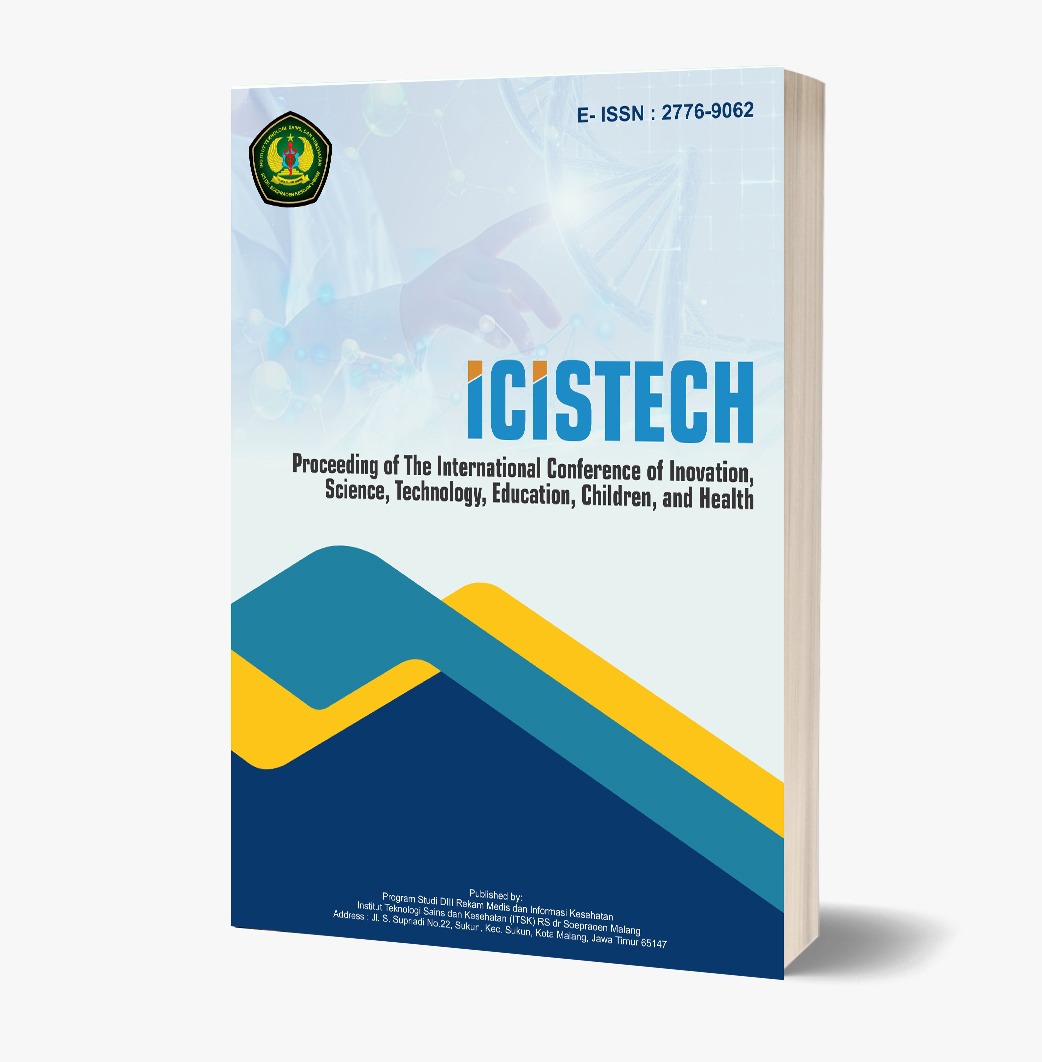Analysis of Factors Influencing the Incidence of Labor Complications in the Era of Health Digitalization in Malang Regency
DOI:
https://doi.org/10.62951/icistech.v5i1.233Keywords:
Childbirth complications, factors, health digitalization, health facilitiesAbstract
The incidence of labor complications is one of the main challenges in maternal health. With the rapid development of digital technology, many health facilities have begun to integrate digital systems into health services. According to data from the Ministry of Health, the number of labor complications is still high, especially in areas with limited access to quality health facilities. Various factors, such as maternal age, nutritional status, education, and access to health services, contribute to the risk of complications that can endanger the health of mothers and babies.Objective: This study aims to analyze the factors that influence the incidence of childbirth complications in the era of health digitalization.Method: This type of research uses a quantitative approach with the Cross-Sectional Survey method. The population in this study were mothers who gave birth in health facilities in Malang Regency. The research sample was taken using a purposive sampling technique, which included pregnant women with a history of childbirth complications and the use of digital health services in the period 2023-2024. Sample: A total of 50 pregnant women were taken. The results of this study indicate a significant relationship between sociodemographic factors and the incidence of childbirth complications in Malang Regency, with a p value = 0.030 (p <0.05). This finding is in line with various previous studies that identified education, maternal age, age of marriage, and parity as important determinants of the incidence of childbirth complications. These findings confirm that although digital technology is increasingly developing in health services, fundamental factors such as maternal sociodemographic characteristics remain important determinants of the incidence of childbirth complications.
References
Anderson, K., & Lee, M. (2024). Digital health interventions in maternal care: Evidence-based policy development. Global Health Policy Review, 15(3), 234–251.
Astuti, R., Wardhani, S., & Prabowo, A. (2021). Risk factors associated with birth complications in East Java Province. Indonesian Journal of Reproductive Health, 12(4), 89–102.
Badan Pusat Statistik Kabupaten Malang. (2024). Kabupaten Malang dalam angka 2024.
Badan Pusat Statistik, Badan Kependudukan dan Keluarga Berencana Nasional, Kementerian Kesehatan Republik Indonesia, & ICF. (2018). Survei demografi dan kesehatan Indonesia 2017.
Brown, J., Martinez, C., & Singh, P. (2022). Digital divide in healthcare access: Implications for maternal health outcomes. Journal of Health Inequalities, 8(2), 167–184.
Cunningham, F. G., Leveno, K. J., Dashe, J. S., Hoffman, B. L., Spong, C. Y., & Casey, B. M. (2022). Williams obstetrics (26th ed.). McGraw-Hill Education.
Davis, L., & Thompson, R. (2023). Traditional vs. digital-era maternal health research: A systematic review. Maternal Health Research Quarterly, 7(1), 45–62.
Dinas Kesehatan Kabupaten Malang. (2024). Profil kesehatan Kabupaten Malang tahun 2024.
Dinas Kesehatan Provinsi Jawa Timur. (2023). Profil kesehatan Provinsi Jawa Timur tahun 2023.
Dornan, L., Campbell, S., & Williams, H. (2023). Impact of digital health technologies on maternal and child health services delivery. Digital Health Innovation Journal, 9(4), 312–328.
Fauziah, N., Rahman, A., & Sari, D. (2024). Implementation of Indonesia's Satu Sehat platform in maternal health services. Indonesian Health Informatics Journal, 6(2), 78–91.
Garcia, M., Lopez, S., & Chen, L. (2023). Designing targeted interventions in the digital health era: Maternal health perspectives. International Journal of Digital Medicine, 4(3), 189–205.
Greenhalgh, T., Wherton, J., Shaw, S., & Morrison, C. (2021). Video consultations for COVID-19: An opportunity to learn about the future of healthcare delivery? British Medical Journal, 372, n287. https://doi.org/10.1136/bmj.m998
Harrison, M., Clark, R., & Davies, K. (2023). Electronic health records and continuity of maternal care: A longitudinal study. Health Information Management, 18(2), 134–149.
Johnson, A., White, B., & Taylor, M. (2023). Challenges of healthcare digitalization: Patient-provider relationship dynamics. Healthcare Communication Review, 11(3), 267–281.
Kementerian Kesehatan Republik Indonesia. (2023). Strategi transformasi digital kesehatan Indonesia 2024–2030.
Kementerian Kesehatan Republik Indonesia. (2024). Profil kesehatan Indonesia tahun 2023.
Kementerian Komunikasi dan Informatika Republik Indonesia. (2024). Status literasi digital Indonesia 2024.
Lestari, P., Handayani, T., & Wibowo, S. (2024). Research gaps in digital maternal health: Indonesian context analysis. Southeast Asian Journal of Public Health, 13(1), 23–38.
Luo, H., Zhang, Y., & Wang, Q. (2023). Digital health interventions for early detection of pregnancy complications: A meta-analysis. Journal of Medical Internet Research, 25, e41234.
Moore, D., Jackson, E., & Wilson, F. (2024). Adapting maternal health prevention.
Downloads
Published
How to Cite
Issue
Section
License
Copyright (c) 2025 Proceeding of The International Conference of Inovation, Science, Technology, Education, Children, and Health

This work is licensed under a Creative Commons Attribution-ShareAlike 4.0 International License.













